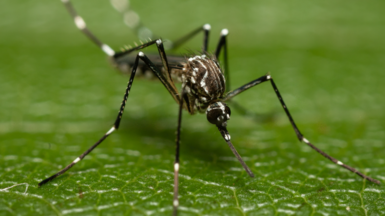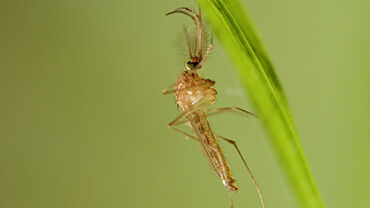Epidemiological update: 2012 West Nile virus outbreak in the USA, 30 August 2012Archived
As of 28 August 2012, 1 590 human cases of West Nile virus disease have been reported in the United States of America. Of these, 889 (56%) were classified as neuroinvasive disease.
As of 28 August 2012, 1 590 human cases of West Nile virus disease have been reported in the United States of America. Of these, 889 (56%) were classified as neuroinvasive disease [1]. West Nile virus infections in people, birds, or mosquitoes have been reported from 48 states of which 44 reported human cases. Seventy-one percent of the neuroinvasive human cases are reported from six states (Louisiana, Michigan, Mississippi, Oklahoma, South Dakota, and Texas), with 44% of neuroinvasive cases from Texas.
The USA experiences the largest outbreak of West Nile virus since the virus was first detected in 1999: the case numbers in 2012 are the highest since 1999 for this time of the year, and the number of neuroinvasive cases reported so far is higher than the number of neuroinvasive cases reported annually from 2008 to 2011.
The upsurge of transmission of West Nile fever this year predominantly in the central and southern part of the country remains unexplained. One hypothesis states that the United States has suffered severe droughts in previous months which would have favoured closer contacts between birds and mosquitoes including bridge vectors biting humans.
In Europe, WNV infection has become recognised as a major public health concern since the first large outbreak in Romania in 1996. To address this concern, ECDC publishes since 2011 weekly updates on the distribution of West Nile fever cases in the European Union and neighbouring countries on its website. Cases reported in the EU include confirmed and probable cases with positive laboratory results as per the EU case definition and all reported cases outside the EU. As of 30 August 2012, 115 human cases of West Nile fever have been reported in the EU (from Greece, Italy and Romania) and 224 cases in neighbouring countries.
Most human infections of West Nile virus are asymptomatic. After an incubation period of 3–14 days, most clinical cases develop mild disease with flu-like symptoms. However, in more severe cases (estimated to be one out of 140 to 320 infections) there may be signs of encephalitis, meningo-encephalitis or meningitis. The case-fatality ratio among patients with neuro-invasive illness ranges from 4% to 14%, but may be higher in the elderly. West Nile virus is transmitted through mosquito bites, mainly Culex mosquitoes.
The best way to prevent West Nile infection is to avoid mosquito bites. People can use insect repellents when they are outdoors and wear long sleeves and trousers at these times, or consider staying indoors when the mosquitoes are most active. In areas with high mosquito populations, good screens on windows and doors can keep mosquitoes out.







